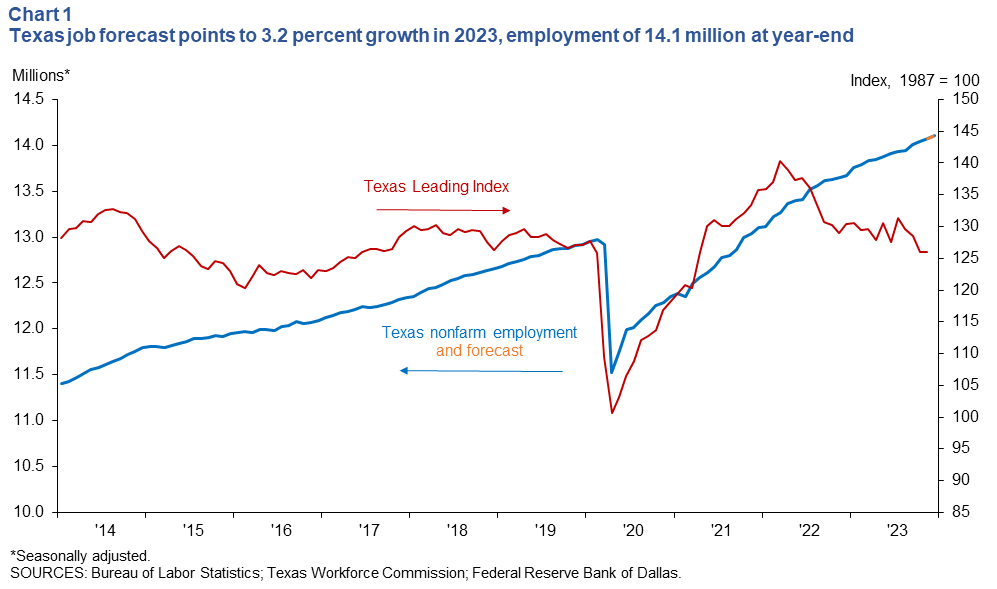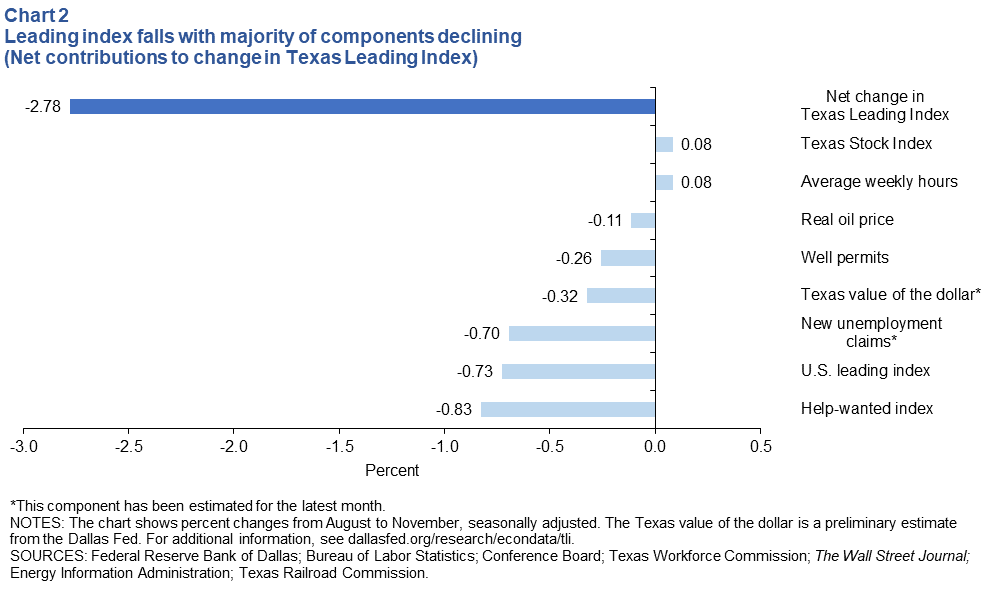Texas Employment Forecast

The Texas Employment Forecast indicates jobs will increase 3.2 percent in 2023, with an 80 percent confidence band of 3.1 to 3.3 percent. The forecast is based on an average of four models that include projected national GDP, oil futures prices and the Texas and U.S. leading indexes. The forecast suggests that 436,000 jobs will be added in the state this year, and employment in December 2023 will be 14.1 million (Chart 1). It implies growth in December will be an annualized 2.3 percent.
Texas employment grew an annualized 3.1 percent month over month in November, with 35,200 jobs added, while October employment growth was significantly revised up from 1.2 percent to 2.5 percent.
“The Texas labor market remains resilient even as employment growth slows from the high rates recorded after the pandemic,” said Luis Torres, Dallas Fed senior business economist. “November’s uptick in employment was led by professional and business services and construction. Job gains were also seen in information, education and health, leisure and hospitality, trade, transportation and utilities, and other services. Meanwhile, manufacturing, financial services, and oil and gas reported job losses.”
The Texas Leading Index decreased over the three months through November (Chart 2). Negative contributors to the index included decreases in the help-wanted index, the U.S. leading index, well permits, the real price of West Texas Intermediate oil and increases in new unemployment claims and the Texas value of the dollar. In contrast, an increase in average hours worked and the Texas Stock Index pushed the index upward.


Next release: January 19, 2024
Methodology
The Dallas Fed’s Texas employment forecast projects job growth for the calendar year and is estimated as the 12-month change in payroll employment from December to December.
The forecast is based on the average of four models. Three models are vector autoregressions where Texas payroll employment is regressed on the lags of West Texas Intermediate (WTI) oil prices, the U.S. leading index and the Texas Leading Index, respectively. The fourth model is an autoregressive distributed lag model with regression of payroll employment on lags of payroll employment, current and lagged values of U.S. GDP growth and WTI oil prices, and Texas COVID-19 hospitalizations through March 2023. Forecasts of Texas payroll employment from this model also use as inputs forecasts of U.S. GDP growth from Blue Chip Economic Indicators and WTI oil price futures. All models include four COVID-19 dummy variables (March–June 2020).
For additional details, see dallasfed.org/research/forecast/.
Contact Information
For more information about the Texas Employment Forecast, contact Luis Torres at luis.torres@dal.frb.org.